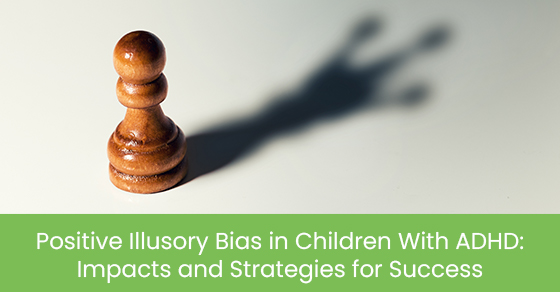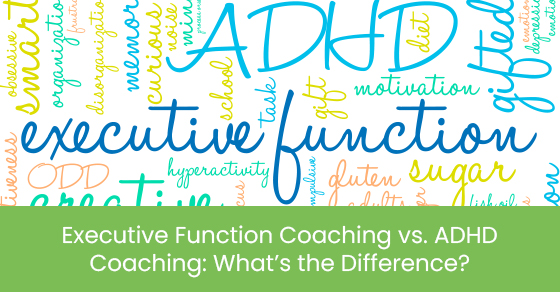Does an exaggerated sense of our own abilities help or hinder us? The answer may be “both.”
Attention deficit hyperactivity disorder (ADHD) is a neurodevelopmental disorder that affects millions of children worldwide. One intriguing aspect of ADHD is the presence of a phenomenon known as positive illusory bias. This cognitive bias leads some people with ADHD to perceive their abilities and performance as superior to reality, even in the face of objective evidence to the contrary. The tendency adds a layer of complexity to the lives of individuals with ADHD, influencing their self-perception, interactions, and achievements.
“It is well-known that children are typically optimistic,” wrote University of British Columbia Assistant Professor of Psychology Yuanyuan Jiang in a 2009 study, “but the bias of children with ADHD is different from this normal optimism in three major ways. First of all, children with ADHD have a greater absolute positive bias than children without ADHD in that their self-perceptions are even more positive than the self-perceptions of children without ADHD. Secondly, in contrast to those without ADHD, the positive illusions of children with ADHD do not serve to enhance the children’s motivation, endurance, or performance. Finally, children with ADHD maintain their positive illusions even in the face of clear contradictory evidence while the positive illusions of those without ADHD move closer to reality after receiving feedback.”
What are the different aspects of positive illusory bias, how does it affect the lives of children with ADHD, and how can it be addressed or harnessed to help young people flourish academically and personally?
Understanding Positive Illusory Bias
Positive illusory bias, also known as the “above-average effect,” refers to the tendency of individuals to overestimate their competence, abilities, and performance in various domains. People with this bias interpret and remember information in a positive way, often overlooking or downplaying negative aspects. For children with ADHD, this bias manifests as an inflated view of their own functioning, where they believe they excel at tasks even when they struggle or underperform.
This cognitive distortion is rooted in the impaired self-awareness and executive function deficits characteristic of ADHD. The executive functions are the cognitive processes that allow individuals to regulate their thoughts, behaviours, and emotions to achieve goals, solve problems, and adapt to new situations. These functions are like the "CEO" of the brain, responsible for managing and coordinating various mental processes.
This positive self-perceptual bias has several significant effects on the lives of children with ADHD:
Limited Self-Awareness: These children often have a diminished awareness of their actual deficits. This can hinder their ability to recognize the areas in which they require assistance and support.
Difficulty Accepting Treatment: Because of their inflated self-perception, children with ADHD may resist acknowledging their need for treatment. They might question why they need help for problems they believe do not exist, making intervention challenging.
Academic Struggles: The overestimation of their capabilities can lead to academic difficulties. They may neglect seeking help, assume they understand lessons when they do not, and struggle with completing assignments.
Social Challenges: Inaccurate self-perception can affect social interactions. Children with ADHD might not recognize the effects of their behaviours on others, leading to difficulties in forming and maintaining relationships.
Emotional Well-Being: Unrealistic positive beliefs can lead to frustration, anxiety, and lowered self-esteem when faced with consistent underachievement or misunderstandings in various situations.
Addressing Positive Illusory Bias for Success
Addressing positive illusory bias in children with ADHD requires a multi-faceted approach involving teachers, parents, coaches, and mental health professionals:
Psychoeducation: Educate children about ADHD and its impact on cognitive processes. Teaching them about the nature of positive illusory bias can encourage self-awareness.
Feedback and Self-Evaluation: Provide regular, constructive feedback on their performance. Encourage self-evaluation by asking questions like, "What do you think went well in this task? What could have been improved?"
Setting Realistic Goals: Collaboratively set achievable goals with the child. Breaking tasks into smaller steps can help them understand their progress and areas for improvement.
Visual Aids: Use visual aids, such as charts and graphs, to illustrate their performance objectively. This can help bridge the gap between their self-perception and reality.
Social Skills Training: Incorporate social skills training to help them understand the impact of their actions on others. Role-playing and real-life scenarios can enhance their social awareness.
Counseling and Therapy: Consider involving mental health professionals who specialize in ADHD. Cognitive-behavioral therapy can help children manage their biases and develop coping strategies.
Encourage a Growth Mindset: Foster the belief that abilities can be developed through effort. Emphasize that mistakes are opportunities for learning and growth.
Coaching: Trained coaches can be a valuable support for students with ADHD who also exhibit positive illusory bias. There are many ways they can help, such as working with students to help them become more aware of their positive illusory bias and its potential effects. Coaching can provide a supportive and nonjudgmental environment where students can openly discuss their challenges and progress. This accountability can motivate students to implement strategies consistently.
Strategies to encourage self-awareness, accurate self-assessment, and effective coping mechanisms can help students harness the benefits of positive thinking while minimizing potential downsides. After all, it was Thomas Edison’s relentless optimism and belief in his capabilities that led to his numerous groundbreaking inventions, as he often disregarded his failures along the way. Wolfgang Amadeus Mozart, the prolific composer, displayed remarkable confidence in his musical talents from a young age and held an unshakable high opinion of his own abilities. Research also suggests that people with positive illusory bias may be more altruistic and driven to help others (Lee and Chung, 2008).
By employing a combination of education, feedback, goal-setting, and professional support, we can bridge the gap between perception and reality, enabling individuals with ADHD to thrive academically and beyond.
Contact us to learn more about how our ADHD coaching, programs, and services can help.
Suggested Reading:
The ADHD Advantage: What You Thought Was a Diagnosis May Be Your Greatest Strength by Dale Archer, M.D.
Mindset: The New Psychology of Success by Carol S. Dweck
The Optimism Bias: A Tour of the Irrationally Positive Brain by Tali Sharot



